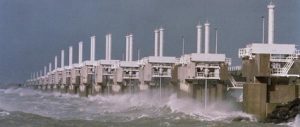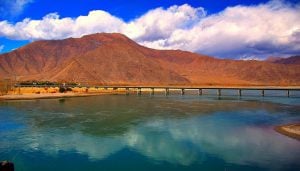Imagine a China of the future where Guangdong province is struggling to remain the factory of the world, or Henan, Shandong and Hebei are no longer the country’s bread basket. Hard to imagine? Unfortunately, this scenario is not quite as extreme as it sounds.
China’s government believes climate change is increasing the pressure on the country’s already stressed water, food and energy resources, putting further strain on already stretched infrastructure and compounding the problem of rising food prices, water scarcity and power shortages. This is having different effects on different provinces, depending on the nature of their economies. For example:
* 14 provincial economies could be at risk from water stress because they are heavily reliant on manufacturing.
* Only six provinces have both above-average GDP growth and above-average water availability per capita. Other fast-growing provinces could be at risk if water availability falls.
* Energy intensity is the key to cutting the energy deficit; provincial targets are now in place for 2015.
To meet tough new environmental targets being introduced by the government, some provinces – including powerhouses like Guangdong – may have to change the make-up of their economies. This raises important questions about where companies set up operations or source materials from. In turn, this increases business risk for companies sourcing from, operating in and selling to China.
HSBC’s view is that investors should begin to look at climate change as a key business risk and incorporate this into their investment analysis and valuations, scrutinising portfolios for concentration of exposure to certain provinces and policies. The climate factor affects industries closely related to resource stress through raw material costs, inflation and demand degradation. Exposed businesses need to plan for resource constraints and new efficiency policies.
The human, physical and economic impact of climate change on China is clear. For example:
* Extreme weather such as floods, droughts, rainstorms and low temperatures in 2010 caused 4,800 deaths and resulted in direct economic losses of 500 billion yuan (US$75 billion). The National Climate Center believes that global warming was largely to blame for the country’s frequent extreme weather.
* Officials estimate that extreme weather is causing average grain losses of approximately 10% of China’s annual grain output.
* The severe drought last winter mainly affected eight provinces, representing 80% of winter wheat growing regions. Food prices in China rose 9.6% in December and 10.3% in January. Domestic wheat prices rose around 10% year-on-year, international winter wheat prices increased up to 50% year-on-year.
* This summer’s power cuts and blackouts were caused in part by high thermal coal prices and a drop in hydropower production. In May water levels in the Yangtze River fell to near record lows – affecting the capacity of hydropower stations along the river. Power shortages not only affect power producers but also disrupt businesses.
This last point is particularly important. The authorities in some regions of China have occasionally increased retail prices in order to lessen the demand on the grid. Certain sectors have also had to pay higher prices for power, especially during periods of seasonal demand. This is especially disruptive as many companies are already facing rising costs through raw material price hikes (resource stress) and wage increases (inflation). Another method used during the summer to reduce demand was to force factories to suspend production for certain days during the week.
Earlier this year we assessed the vulnerability of the G20 countries in terms of their exposure, sensitivity and ability to adapt to climate change. China was found to be the third most vulnerable after India and Indonesia. The good news is that Beijing is taking action to address these problems. Its policies are based on the premise that low-carbon growth and more efficient use of its natural resources are essential for the development of the country.
The 12th Five-Year Plan (FYP) for 2011 to 2015, released earlier this year, includes a triple efficiency drive relating to water, energy and carbon intensity [also read chinadialogue’s ebook “China’s green revolution: energy, environment and the 12th Five-Year Plan”]. One of the main objectives is to “effectively conserve resources and protect the environment”. Professor Hu Angang, of the Chinese Academy of Sciences and Tsinghua University, calculated that a third of the targets in the 12th FYP were related to resources and the environment.
The promotion of seven strategic emerging industries centred around energy saving, environmental protection, next generation IT, clean energy, vehicles and materials as well as bio-technology is also a clear sign of government investment priorities. HSBC’s chief economist for Greater China, Qu Hongbin, forecasts these industries will share 5% of China’s GDP by the end of the 12th FYP and 15% by the end of the 13th FYP.
Beijing is also focusing on water conservation, water efficiency and the importance of irrigation. A climate-change law is being drafted and other policies will emerge during the next few years to deal with resource conservation and help transform China into a low-carbon economy.
The implications of climate change are wide and varied. HSBC believes investors need to look at their portfolios to assess risk levels, corporate strategy and operational efficiency. For example:
* Which companies are directly exposed to serious water availability constraints?
* Which companies are located in provinces with ambitious energy intensity reduction targets?
* Are the risks of resource stress in China understood at board level?
* What contingencies have been put into place to respond to disruption of resources?
China is responding to the challenge of climate change. We believe it is time investors followed suit.
Wai-Shin Chan is director of climate-change strategy, Asia Pacific, for HSBC Global Research.
This article is published as part of our Green Growth project, a collaboration between chinadialogue and The Energy Foundation.
Homepage image by Lu Guang / Greenpeace





